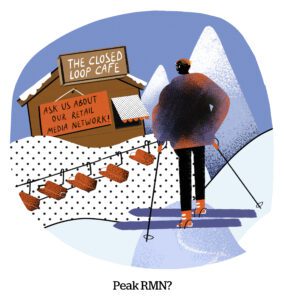In August 2022, the IAB Tech Lab introduced updates to its Ad Formats Guidelines for Digital Video and CTV. These updates proved to be small steps in the right direction for industry transparency. However, there was still a lot of work to do before the guidelines were finalized.
The amended guidelines changed the definition of in-stream video to include video that is sound-on and plays before, during or after streaming video content the user has requested; delivers within a player; monetizes content that the publisher is delivering; and can include linear and nonlinear ads, which don’t need to be videos.
This update posed a severe challenge for publishers, especially smaller ones. Roughly 90% of what once constituted in-stream video inventory was now considered out-stream. The audio criteria also limited quality inventory from being labeled as in-stream, an outcome which benefited neither publishers (who know sound-on is annoying to their audience) nor advertisers (who would have faced artificial inventory scarcity).
Now, given industrywide pushback, the IAB Tech Lab has amended its previous update to provide more clarity for publishers, advertisers and technology companies.
Redefining out-stream and in-stream
The IAB’s latest update confirms that sound-on in video is an accurate indicator of consumer intent and can be important in signaling high-value video inventory that does not meet the other in-stream requirements. However, sound-on should not be the only qualifier.
Above all else, the nontechnical definition of an in-stream video placement is one where the user truly intended to watch video content, including when the user is watching the video as the primary goal of the page visit.
Additionally, the video player may convert to a floating/sticky player as users scroll through the page, but under the new guidelines, any subsequent ad calls may not be labeled as in-stream after the video player floats.
Recognizing the value of accompanying content
The revised guidelines also recognize that accompanying content, including pre-roll, mid-roll and post-roll ads, can expose end users to discoverable content, even though watching that content may not be the original purpose of their visit.
The video player can load before, between or after paragraphs of text or graphical content and start playing only when it enters the viewport. And accompanying content should only start playback upon entering the viewport.
As the guidelines previously stood, the criteria was far too narrow to account for accompanying content. While accompanying content is technically still considered out-stream, it holds more value when signaled in the bid stream as opposed to other out-stream categories like no content or standalone.
Industry adoption is the only way to drive change
While these updates are significant, early industry adoption is vital.
Though the guidelines include a new attribute – video.plcmt – to incentivize publishers to adopt the new in-stream and out-stream values, each SSP and DSP will adopt the new definitions into their platform at different times.
That means the best path forward incentivizes early adoption but doesn’t punish publishers using the new values, especially if some of their demand partners are using legacy values.
But still, an unfair double standard remains when it comes to determining in-stream video. For example, a buyer will label any YouTube video as in-stream, even if it’s a follow-up video the user did not originally choose to watch.
Therefore, it’s imperative that all publishers and platforms should be held to the same standards and hold each other accountable for driving transparency.
Contextually relevant content will benefit the consumer
There is continued work needed as it relates to contextual relevance.
The Tech Lab made a big leap toward video ad support in OpenRTB in 2022 with 2.6 and Pod Bidding. Contextual targeting helps make discoverable video experiences more relevant to the end user. Contextually relevant accompanying content can be a great way for publishers to get users to watch more content and for advertisers to engage those users around topics that matter to them.
Transparency will equate to a fair market price
With more transparency about a video’s in-stream or out-stream classification, video ads will likely be priced more fairly, leading to greater access and demand from advertisers. This will also enable publishers to get a fair price for valuable inventory during an economic downturn.
The IAB Tech Lab’s latest update is a positive step toward holding the entire industry to the same standards. As we adopt these principles, we can drive real change and action.
Correction 4/14/23: This column previously said that, under the new guidelines, a video player may convert to a floating/sticky player as users scroll through the page and still be recognized as an in-stream video player, as long as the subsequent ad accurately conveys the updated player size. The IAB Tech Lab clarified that subsequent ad calls may not be labeled as in-stream after the video player floats.
The column also previously said that the updated spec clarifies that the out-stream designation is only for ads. The IAB Tech Lab clarified that the Open RTB spec does not include an “out-stream” designation.
“On TV & Video” is a column exploring opportunities and challenges in advanced TV and video.
Follow Connatix and AdExchanger on LinkedIn.
For more articles featuring Jenn Chen, click here.

















